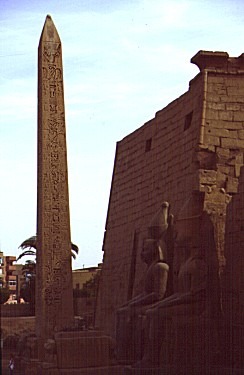
Der moderne Name des südlichen Abschnitts von Theben, der Stätte des Tempels des Amun-Kamutef (der altägyptisch 'Ipet-resit' hieß). Der jetzige Tempel wurde von Amenophis III. erbaut und von mehreren späteren Pharaonen erweitert, darunter Ramses II. Alexander der Große begann eine Wiederherstellung. Der Tempel war mit dem Tempel von Karnak durch eine von Sphingen gesäumte Prozessionsstraße verbunden. Einmal jährlich zog die Statue des Gottes Amun während des Opetfestes von dem einem Tempel zum anderen. Darstellungen dieses Ereignisses wurden von Tutanchamun am Tempel von Luxor angebracht. In der Römischen Zeit diente der Tempel dem Kult des vergöttlichten Kaisers und in islamischer Zeit wurde in einen Teil des Tempels eine Moschee gebaut. Zu den wichtigsten Funden hier zählt die Entdeckung einer unterirdischen Cachette von Statuen vor allem der 18. Dynastie im Jahre 1989. Außerdem wurden im Großen Pylon des Tempels viele Blöcke aus Bauwerken Amenophis' IV./Echnatons gefunden, die nach seinem Tod abgerissen worden waren (die sogenannten 'talatat'-Blöcke). Einer der ursprünglich zwei Obelisken vor dem Tempel steht jetzt in Paris.